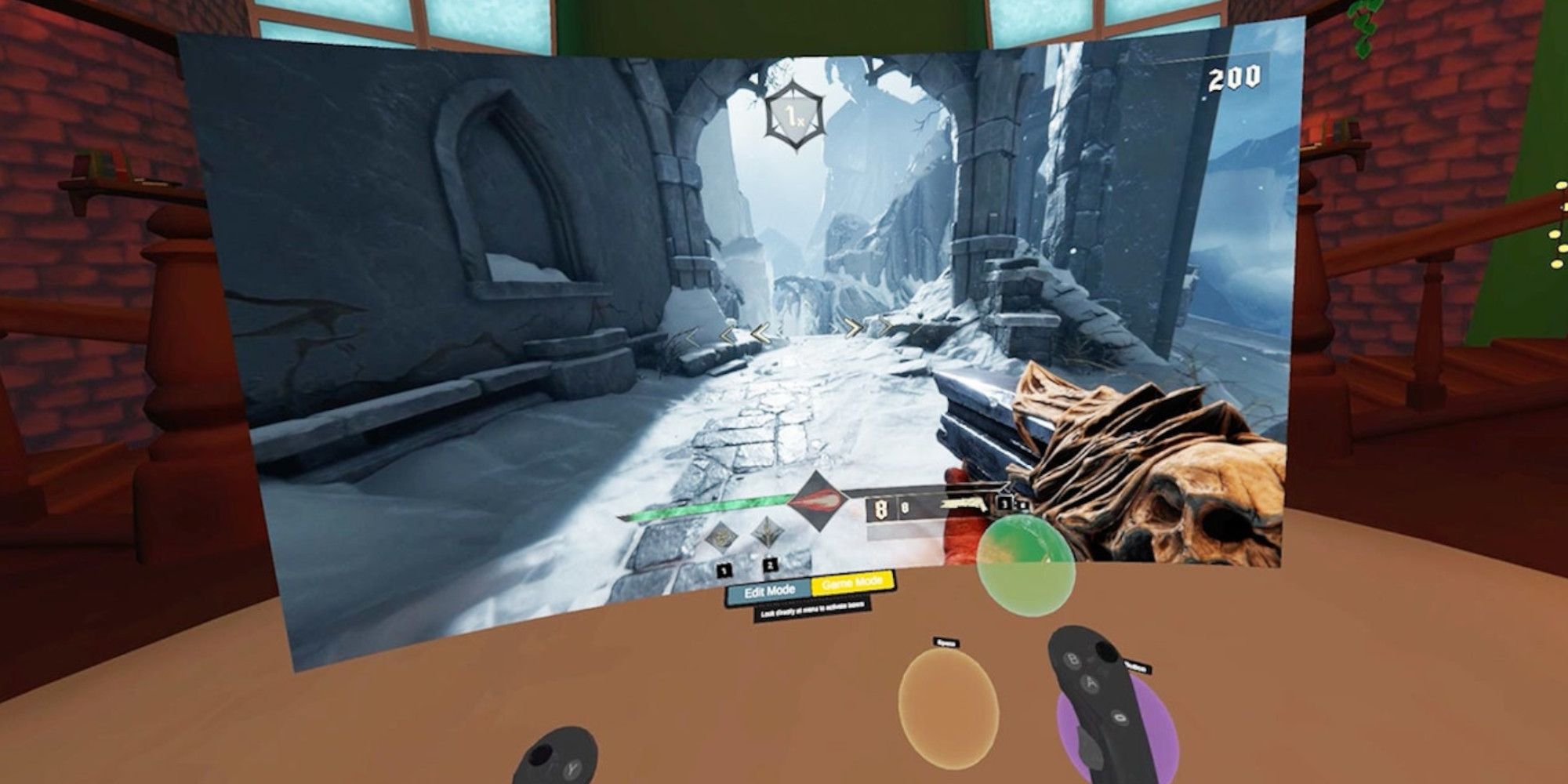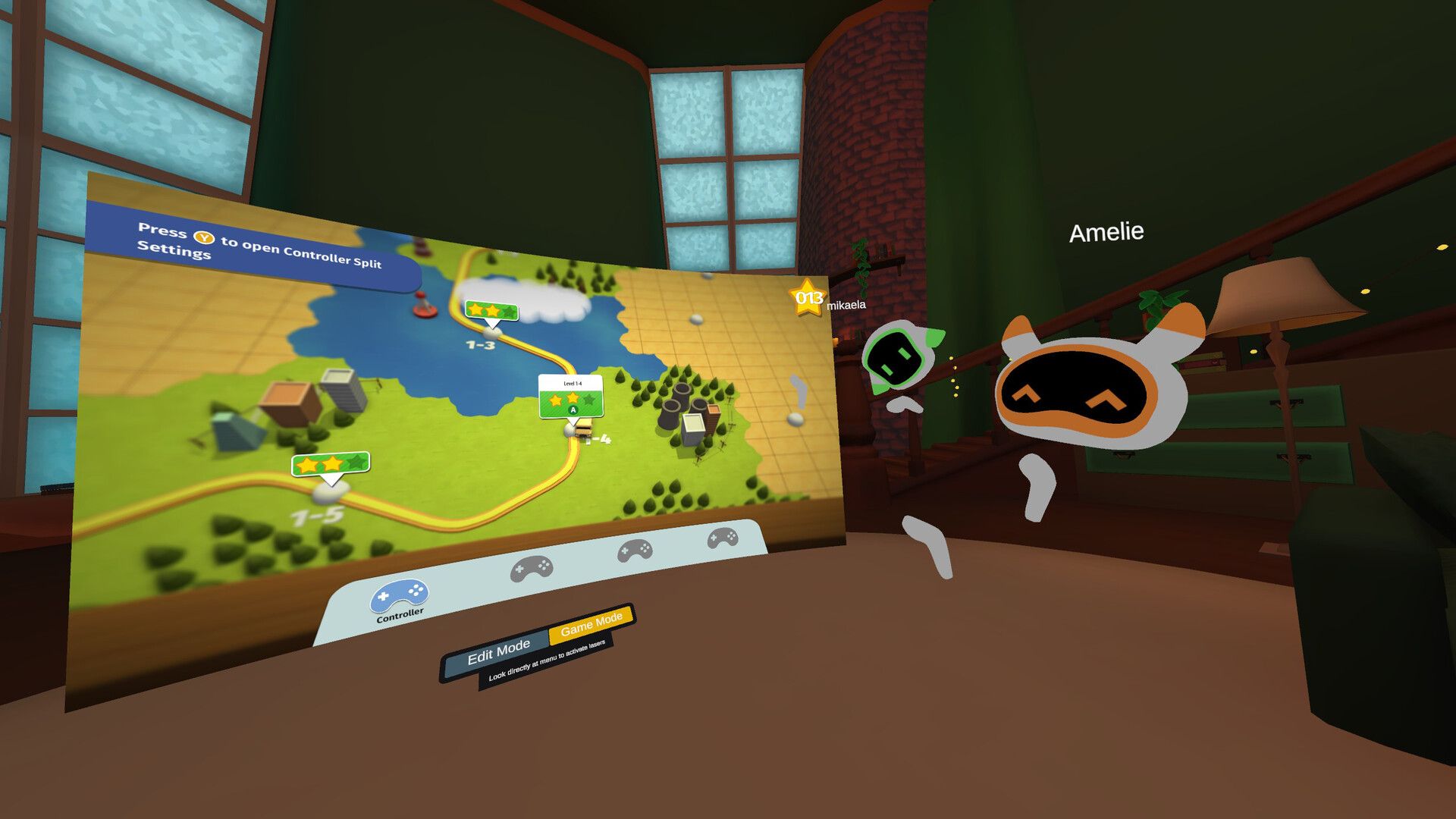The weird thing about using Virtual Desktop in VR is that you have to sit in front of an actual desktop when you use it. I’m sitting at my desk in my normal chair like I always do, my hands are on my keyboard like they always are, but I’m wearing a headset and looking at a virtual version of my real monitor - one that’s harder to read thanks to the low resolution of the Quest 2. I can see how it might help some people cut back on the distractions around them, and the ability to resize the screen and make it track your eyes are interesting benefits, but it’s never been worth it for me. I paid a lot for my ultrawide Samsung Odyssey G9, and I don’t see the point of looking at a simulation of it when the real thing is right here.
The GameVRoom app on Steam has me second guessing, though. Instead of using a controller or a mouse and keyboard to interface with Remote Desktop, GameVRoom allows you to keybind the buttons on your Quest 2 controllers to your Steam games. Its function is pretty straightforward, but it opens up a lot of gaming opportunities. Now, I can play my entire Steam Library in VR anywhere I want. I can sit on the couch, lay in bed, or climb in the bath, and I’ve got a full, customizable view of my desktop, and a simple way to control my games.
The app has a pretty intuitive system for mapping your keys to the Quest 2 controllers. It takes a lot of cues from the Steam Controller and tries to make getting started as hassle-free as possible by supplying a user-created database of configuration options. There are default maps to choose from based on the genre of the game you’re playing, but if someone else has come up with a specific layout that works best for your game, you don’t have to fiddle with the settings yourself, you can just use theirs. GameVRoom is only in early access, and it’s a pretty niche app, so as you can imagine, there aren’t a lot of custom control schemes out there yet. Luckily the default ones worked well for most of the games I played.
While it’s possible to link a controller to your Quest 2 and play desktop games remotely, it can be cumbersome to fumble with multiple controllers while wearing a headset, and the Bluetooth connection puts a lot of strain on the battery. GameVRoom solves those problems while offering far more customization. Not only can you map controller buttons to the VR controllers, but you can also emulate a mouse by dragging the right controller around. You can also create pose and gesture actions to replace keybindings. Instead of pressing A to swing a sword, you could swing the controller, or instead of holding a trigger to accelerate a motorcycle, you could twist your wrist to simulate turning the throttle. You can also create virtual buttons and place them anywhere you want in the virtual environment, then just reach out and press the button physically. If you’re willing to spend the time tinkering with it, you can create some really unique ways of interacting with games.
It was a lot to wrap my mind (and hands) around, and I struggled to adapt to using the Quest 2 controller like a mouse. I think it’s something I could get used to, but after a lifetime of gaming on a mouse and keyboard, a lot of these control options were hard to do. It’s one thing to move around in a VR game in a semi-natural way, but playing something that wasn’t designed for VR, like Midnight Suns or Monster Hunter Rise, with motion controls isn’t easy. Even moving the mouse to look around in a shooter like Doom Eternal felt weird and unnatural at first, but I started to get the hang of it eventually.
I also had a hard time just getting the software to work without overloading the Quest 2 and my PC. Just to play a game through GameVRoom you first have to stream your PC to the headset through the Oculus App using Airlink, then launch the SteamVR interface, then launch GameVRoom from inside SteamVR, then launch your chosen game from within GameVRoom. All those layers of processing practically gave my PC a heart attack, and I found streaming games on my 5120x1440 ultrawide monitor was completely out of the question. I eventually got it to run fairly stable by freeing up my processor and memory as much as possible and limiting my resolution, but it took a lot of trial and error to get working.
It’s never going to replace playing games at my desk, but GameVRoom’s features have been fun to play around with. One thing I haven’t had the chance to check out yet is its multiplayer mode, which allows you and your friends to play non-VR games in split-screen couch co-op, in VR. I use Steam Remote Play often to play couch co-op games with my friends, and I like the idea of a little added immersion where we all sit in a virtual room together playing Overcooked or Unrailed. There’s a lot of potential for a truly remote desktop experience like this, and GameVRoom developers have already implemented some really inventive ideas into the app.
GameVRoom launched in early access on Steam last month. You can learn more about it on its Steam Page, and you can join its official Discord server to ask questions and make suggestions for future development.


